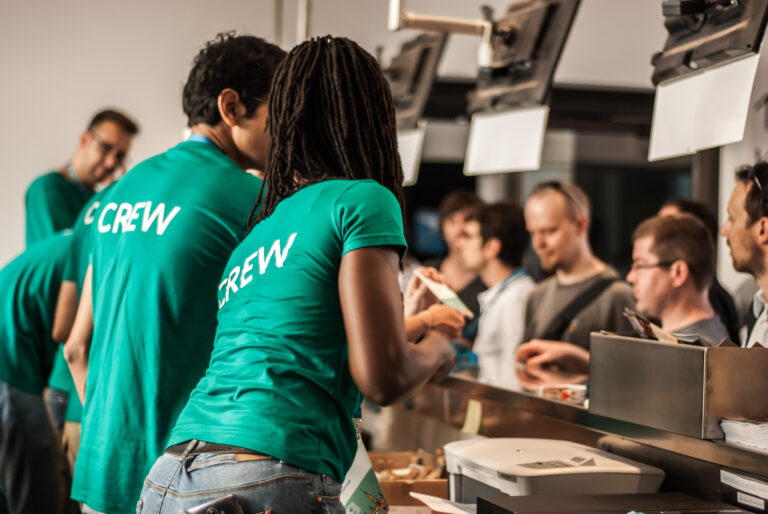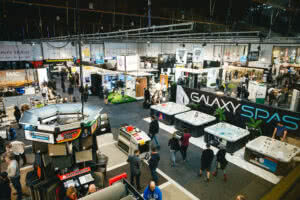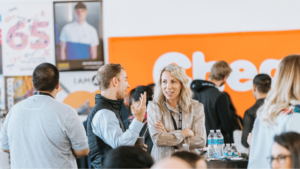Managing crew on a big event or brand activation can be hugely complex. First, there’s the process of recruiting staff, then assigning shifts and allocating tasks, and once it’s all over, you still have timesheets and expenses to deal with.
Trying to do all this in an Excel sheet can lead to some big headaches – but if you continue to work this way, it could soon lead to an even bigger headache. That’s because from 25 May next year, new data protection laws will come into force that means working with employee data in an insecure spreadsheet could leave you liable to fines of up to €20 million!
We asked Greg Lusk, founder of event staffing software Liveforce, how to organise event crew more efficiently and stay on the right side of the law at the same time.
I understand that Liveforce was developed to help solve the difficulties you and your colleagues experienced managing event crew?
That’s right. When I was working as an event manager we did campaigns like putting 100 brand ambassadors in stores throughout the country to do sampling. This entailed the complex booking of crew, in different locations and at different times, as well as the moving of all the equipment between the stores. Then we ran events like big fashion shows where you need specific types of crew like hairdressers or backstage crew or models. This was exclusively organised in an Excel sheet and a Facebook group.
The way we used to recruit staff was by posting up the different jobs available in the Facebook group. People then commented to say if they were available. It didn’t seem very professional and it didn’t give us the overview we needed. It was very reliant on one person working in that Excel sheet and it just didn’t work, especially when we were an agency of 50 event managers trying to run multiple projects at the same time.
I looked on the market for a solution because my team were coming to me the whole time saying, “It’s so frustrating, it’s so time consuming.” They were having to ring all the staff registered with the agency to ask, “Are you available on that date? Can make that time? Have you got the skillset to do the job? How much money are you willing to take for this job?” etc.
We were unable to find anything to do what we needed, so eventually, we decided to build it ourselves. We started wireframing out the process, testing that internally and then actually building the system. Once we’d built it, we always had in mind we’d want to sell it to other agencies because there are a lot of other agencies struggling with the same problem.
At the start of the year we began visiting exhibitions in the UK to meet with event managers and the response was really great. They said, “This solves a massive headache for us, but there are a few things missing for us to jump over to it”. We listened to the feedback and we’ve implemented a great deal. We have a very clear roadmap now until May to build all of the features that people have asked for.
What new features are being added as a result of the feedback?
One of the big things is that UK agencies want to be able to share a shortlist of crew they would recommend to clients to work on a specific brand activation. Clients, more and more, are looking for very specific people to represent their brand; they want a specific look, personality and skill set. So this is a way they can create a shortlist from their database and share it with the client. The client can then be a part of that process and select the brand ambassadors they want to work on a specific event.
The way Liveforce is built, it’s very much like Facebook in that staff create their own profile and are then responsible for keeping that up to date. In many of the legacy products, it’s reliant on a person within the agency ringing round and asking, “Are you still living at the same address? Have you still got the same telephone number and email address?”. We’ve shifted that focus and put it on the crew.
In addition to being able to manage their photos and information, they are also able to upload a video profile of themselves. From a picture you don’t necessarily get an understanding of what that person’s personality is like, so that’s also helping get the right people on the right jobs.
Do staff like being able to manage their own profiles?
Yes, we’ve had a lot of positive feedback. Freelancers want control over when they work, who they’re working for and what jobs they’re taking. Our Crew App gives people that flexibility. In the job board they can filter down to the type of jobs they want. So, if they only want to work waitressing jobs or bar staff or roadshow jobs, they can filter down to all the shifts that are available and then apply with one click.
They have all the information they need to know about those jobs available in the app. It makes it super easy for them. They can allocate their working hours for the month and reach the targets they’ve set themselves in terms of salary, so it enables them to make a proper living as a freelancer.
Can you use the tool to manage all your event staffing roles?
It’s totally flexible. As we come from an event agency background, we’ve been using it to book in all the crew we need for our events; from backstage crew, technical crew, riggers, runners and event hosts.
However, the type of agencies requesting demos really vary. They might run a team of bartenders that they sell out to different bars and nightclubs throughout the UK or they’re a one-man-band with a series of talented dancers. Their clients might ring them and say, “We need some ballet dancers for a car launch,” so they can push that out to their database and get the right crew booked on the job.
How can using a system like Liveforce help organisers comply with the new GDPR data protection laws?
Liveforce is fully compliant with GDPR. A lot of these legacy systems are going to have a big job ahead of them getting compliant because there’s a lot of stuff technically that needs to be done to ensure you are GDPR compliant. The advantage we have, entering the market now, is we’ve been aware of GDPR from day one when we’ve been coding the system.
With us, the freelancer knows what data we’re holding on them because they’ve got access to it themselves, they can easily request to be removed and deleted from our database. We’re enforcing strong passwords so we’re ensuring none of their sensitive information is available to anyone else.
Typically, organisers use Excel spreadsheets for crew management but, as I understand it, they won’t be able to do that anymore under GDPR?
No, or they’ll be risking huge fines if they’re ever found out. What’s funny with GDPR is that personal information is not necessarily the things you’d think; while a passport number is not considered confidential, a food allergy is. Event organisers have to be very careful.
How can you use Liveforce to manage crew onsite at an event?
Liveforce has a task management feature, where the event manager can set a predefined list of tasks that the crew have to do. When you’re working on a retail demo, for example, you are not necessarily there to see if the staff are doing their job. First of all, you want to know they’ve arrived, so you can prompt them to confirm their arrival via the app on their mobile devices.
Then you might want them to confirm they have black trousers on, confirm they’ve watched the training video and answer some questions about the way they’re going to serve a can of Coca-Cola – is it four degrees? Is it five degrees? It’s all the very important things around delivering a brand.
It can also monitor tasks throughout the shift – how many samples have we handed out? What is the client feedback? Give us some examples, take a picture of the stand as it’s set up, document you’ve been in the store. All these sorts of tasks that a client or staffing agency want answers on are inbuilt into the actual shift.
What’s nice about that is the client can easily see this live data coming in, so when they’ve maybe got 100 staff out in 100 different stores, they can sit in their office and watch this data filtering in. This means they can tweak things during the campaign, so they’re not waiting until the end of the project and saying, “Oh, that didn’t work very well.”
What else can crew do in the app?
They can fill out their timesheet immediately after their shift. One of the problems with crew, if they don’t do it there and then they’re going to forget what the figures were. Ordinarily, the crew manager might wait until the end of the month to fill out all the timesheets for the crew but Liveforce disrupts that whole process.
For the crew administrators – the people who are booking the crew and confirming them – one of the massive cost savings we’ve seen is they’re not guessing how many hours the freelancers have worked – was it three hours or was it two and a half hours? While that might not sound like much difference if you times that by 1,000 shifts a month, that’s a lot of money an agency is paying out.
Freelancers will also soon be able to file their expenses in the app. Expenses is a very time consuming process for agencies. A lot of the time, crew managers will have to get all the receipts sent in by the crew, photocopied and filled out on paper which project it was going to.
Now, all that can be done in the app; crew can upload pictures of the receipts, assign it to a specific project and the crew manager can confirm whether or not that expense is acceptable. Both these features give the project manager much better control of exactly how much spend has been made on a project.
What other new features will be coming online soon?
Our Project Editor will launch in November, and I think that’s going to blow the competition out the water. Think Google Sheets, where multiple people can be in there editing at the same time. It allows agencies to create multi-day shifts or split shifts on the same day, with different wages for different parts of the day; it’s super flexible.
Traditionally, it’s been very complicated for agencies booking staff on all the different times and dates and projects, but this makes it beautifully simple. If I’m an event manager and I’ve got multiple projects, I’ve maybe got hundreds of shifts each day, but with the dashboard I can see with one glance which shifts have got all the staff confirmed and which shifts are missing staff – it just helps people get control and it’s a massive timesaver because they’re not hopping in and out of 10 different Excel sheets.
Conclusion
The introduction of GDPR means organisers will have to move away from spreadsheets for managing event crew. While it might seem like a pain, switching to a tool like Liveforce means you can streamline the entire process, ultimately making your job a whole lot easier. Book a demo with Liveforce and get a 30-day free trial.





